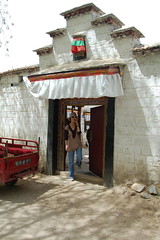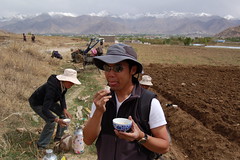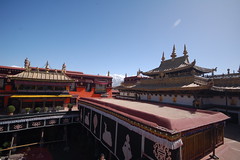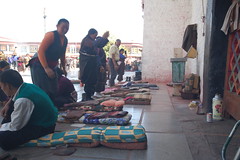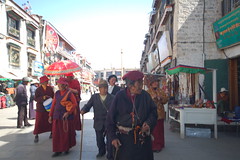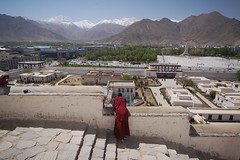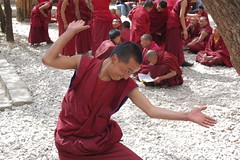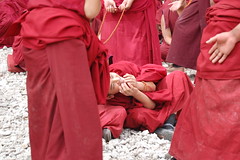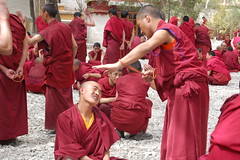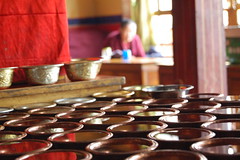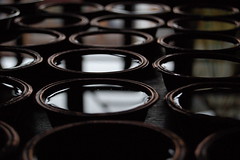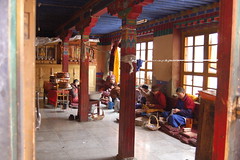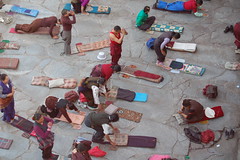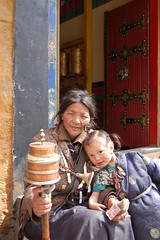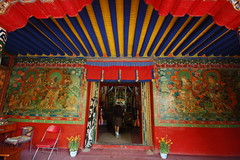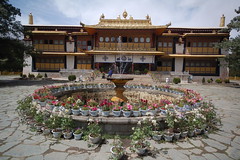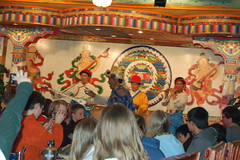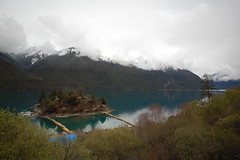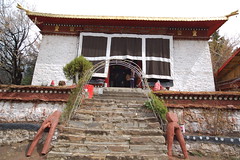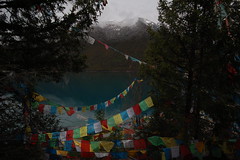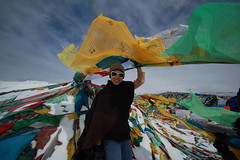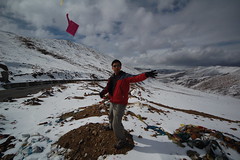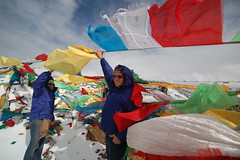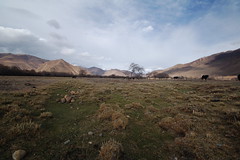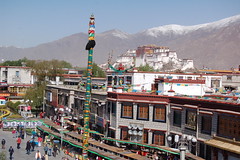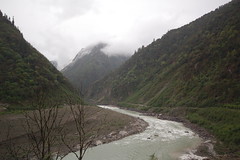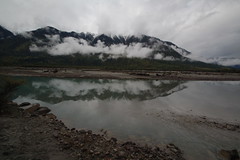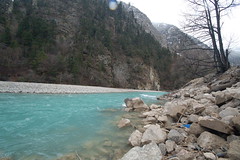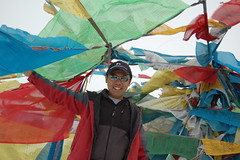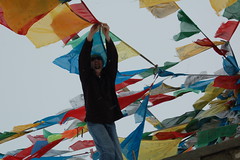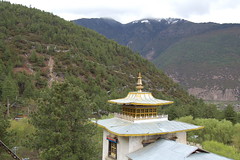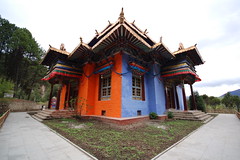Today we decided to rent some mountain bikes, and bike to a village on the outskirts of Lhasa. Each bike was less than 30 Yuan for the entire day, or less than $4 - not a bad deal!
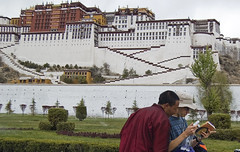
We rode down some small dirt roads, past some walls of Yak cakes, and saw an inviting Tibetan house.
The family that lived there was super nice, and they invited us in to their kitchen for some Barley Wine, and showed us around their house.

We continued to ride, and rode past some farmers, who invited us to sit with them and drink some more homemade Barley Wine and Yak butter tea. Really some of the friendliest people I have ever met, although I can’t speak too highly of their snack food :)
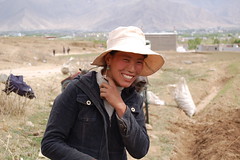
We continued to ride up a hill, and happened upon the Pabonka Monastery, a seldom visited monastery - but we later learned its one of the most ancient Buddhist sites in Lahasa.
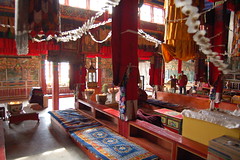
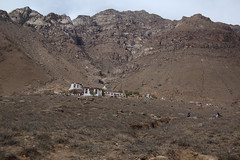

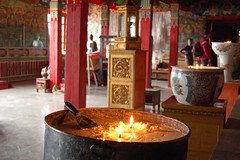
The young monk showed us around, in return for his friends borrowing our mountain bikes for a quick ride around the monastery.

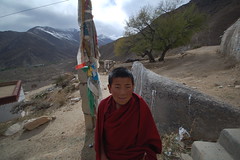
We headed back to Lhasa for for our final evening, a mellow night in the hotel bar reminiscing about our fantastic journey!
Thanks John, Jen, Harry, Karsten, and of course Ashley and Chinabackroads for making this such a fun, inspiring, and exciting journey; also thanks to our drivers and guides for your great information and getting us around safely; and most importantly, thanks to all of the Tibetan people we’ve met along the way - your culture, beliefs, attitude, and kindness are an inspiration to me and should be to the rest of the world.

